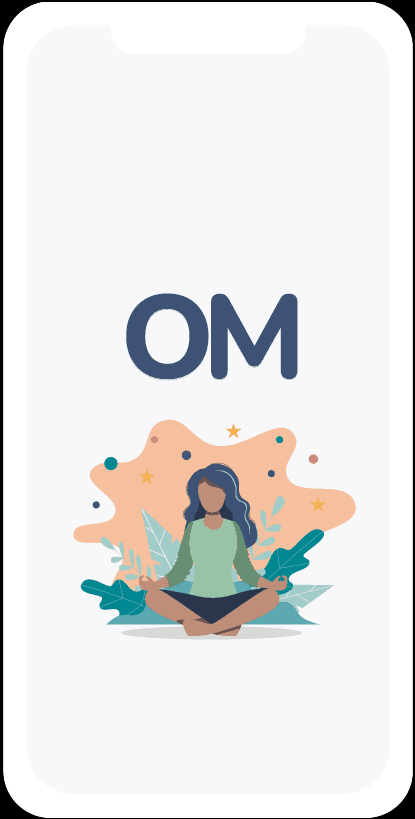OM - Mental Health App
What is OM?: An application to allow users momentary distractions from a possible episode that is causing them anxiety or stress, or any other number of unpleasant feelings.
The Challenge: Users do not have a simple and easy way to distract themselves during a moment of anxiety.
The Solution: Create an app with features that are easy to navigate and use.
Approach
My Role: UX Researcher & Designer
Responsibilities: User research, Wireframing, Prototyping, User testing

Research
I completed several user interviews to gather a better understanding of the users' personal experiences when they became anxious and/or overwhelmed in various different settings.
The interviews were conducted with users ranging from 21 to 48 years of age, and were asked about resources, options, and how they currently cope with anxiety.
“For me, anxiety is just like an overwhelming sense of like, everything is wrong or something is wrong.”
“I feel constricted and suffocated by triggers that would not cause any actual harm.”
"Attempting to ground myself, whether that be counting, calling a friend, getting someone else to talk about mundane things. I basically have to give the energy a space to go."

User Persona
Alfie struggles with unexpected anxiety daily. Unfortunately, these instances are unavoidable and become a challenge to overcome.
Alfie needs a reliable method to achieve momentary distraction when faced with an unexpected anxiety episode.

Feature Prioritization
Research presented which features would be most useful to users:
-
Stress relief
-
Mindfulness
-
Coping skills
-
Personal growth
Story time


Sketches / Wireframes
With prototypes started, I worked with several users to test for the following tasks:
-
Sign up / Login
-
Balloon Breathing
-
Grounding
-
Bubble Wrap Pop
-
Paint mixing
Results showed that 2 out of 5 users struggled with tasks 3 and 5.



Iterations
After user testing on the lo-fi prototypes were completed, I worked to include easily understandable instructions in the Grounding exercise so that users would feel more comfortable going through the motion in an already high-stress situation.



Impact & Future Developments
Impact: Users had a success rate of 80% in tasks 3 and 5 after iterations.
Further iterations included user directions, colors, icons, and rational of activity.
Future developments will include daily affirmations, journaling, anxiety alerts and education with resources.